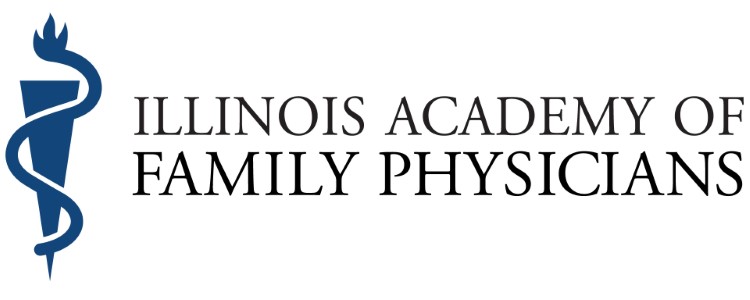Treatment of Opiate Use Disorder (OUD) and Anxiety disorders
Addressing Anxiety and Opiate Use Disorder Together
The following blog post can serve as a template letter for physicians to explain applications where discontinuing benzodiazepine would not be advised.
Dear Healthcare Partner:
Treatment of Opiate Use Disorder (OUD) and Anxiety disorders can certainly be a complex clinical scenario. When treatment of anxiety involves benzodiazepines, it certainly poses inherent risks including overdose death. Although it is widely considered best practice to avoid benzodiazepines in a patient that has a history of opiate use disorder it is not an absolute contraindication nor is it considered inappropriate in every situation. For instance, if a patient is stable on buprenorphine and has been taking a benzodiazepine for many years for effective control of anxiety it would pose greater risk in many respects to discontinue the benzodiazepine medication without a solid patient partnership, congruent treatment goals and a very slow, flexible titration process for weaning.
There are in fact clear warnings against abrupt discontinuation of benzodiazepines as well as the practice of refusal to treat patients with MAT for those taking benzodiazepines. For example, the SAMSHA TIP 63 states, “Benzodiazepine (illicit and prescription) and alcohol use are common in patients with OUD. This use presents clinical challenges, including increased risk of respiratory depression and unintentional overdose or death. Some patients may have taken appropriately prescribed benzodiazepines for years with limited or no evidence of misuse. For such patients, tapering benzodiazepines may be contraindicated and unrealistic. Others may require treatment for a benzodiazepine use disorder. . . Although concomitant use of buprenorphine with benzodiazepines increases the risk of an adverse reaction, including overdose death, opioid agonist treatment should not be denied to patients solely because they take benzodiazepines, because untreated OUD can pose a greater risk of morbidity and mortality. The Food and Drug Administration (FDA) advises that careful medication management by healthcare professionals can reduce risk (see www.fda.gov/Drugs/Drug Safety/ucm575307.htm for more information).” 1
Similarly, the basic text book for addiction medicine by the American Society of Addiction Medicine (ASAM) states, “Prescribers must be aware of the risks inherent in prescribing benzodiazepines and other sedative-hypnotics, but they should be careful not to withhold treatment when appropriate. If providers and patients are well informed and openly discuss the risks and benefits of these medications, and they are prescribed at reasonable doses, sedative-hypnotics can be used safely and effectively for the treatment of a number of otherwise disabling conditions.” 2
It must be noted that the inherent risk of overdose is dramatically reduced by virtue of simply entering a MAT program and taking buprenorphine instead of full agonist opiates regardless of whether a patient continues taking a benzodiazepine. We really can’t lose sight of that fact. Of course, benzodiazepines are not preferred and there is a safety factor and so our practice is to make attempts with patients to find alternative treatment plans to help reduce and ideally eliminate benzodiazepines when possible.
The best vantage point for this situation is that of a long-term process of change. Prolonged benzodiazepine use can result in physical dependence and serious withdraw states when stopped abruptly.3 Weaning benzodiazepines, as a result, requires a very flexible and slow titration process to avoid suffering and frequent treatment failure. Often there is a reluctance on the part of patients to even consider trying alternatives or changing any part of benzodiazepine medications. Sometimes it is clinically impossible. Regardless, a relationship of trust is essential in order to make effective long-lasting change in this situation.
One tool used in this situation is a technique called motivational interviewing which when employed avoids confrontation but allows for patients to consider change internally. This tool is widely accepted in the field of addiction as well as any area that involves difficult change. It is effective and maintains the therapeutic relationship but takes a long time to implement. It respects a patient as the agent of change but kindly pushes them towards healthy change, in this case hopefully safer treatment if and when it is effective. The technique is based on Prochaska’s stages of change.
When trying to reduce or eliminate benzodiazepines, addressing the underlying anxiety disorder is vital. Alternative treatment options such as non-sedative medications and/or counseling can be offered and if these modalities prove effective there is an opportunity to make inroads on reducing benzodiazepine use. Often patients are not ready to make change, but these same patients can be continually monitored for opportunities to move towards the safest treatment options when possible.
Stress is one of the three major triggers for relapse. Helping patients move towards tapering or stopping a benzodiazepine medication is important but not if doing so produces stress that results in or contributes to relapse. We cannot lose the forest for the trees.
To conclude, it must be re-emphasized that the number one treatment goal for a person with OUD is not getting a patient off combination therapy, it is sobriety. Treatment retention is paramount for successful recovery from drug addiction. Helping patients find the best outcome in the big picture of their recovery from substance abuse especially opiates clears a path for success. Discontinuing benzodiazepines when they are appropriately used for anxiety is totally eclipsed as a priority when considering the hazards of unsuccessfully treated or untreated opiate dependency.
Thank you very much for helping serve patients with opiate use disorder. These patients have an illness and they deserve at least the respect and dignity of having access to effective treatment. Thank you for your part in helping make that happen.
[1] SAMHSA. Treatment Improvement Protocol TIP 63: Medications for Opioid Use Disorder. https://store.samhsa.gov/sites/default/files/SAMHSA_Digital_Download/PEP20-02-01-006_508.pdf at 3-83. Updated 2020. Accessed June 16, 2020. Hereinafter referred to as SAMSHA TIP 63.
[2] ASAM Principles of Addiction Medicine, 5th Ed., 732 (2014).
[3] Id. at 127.



